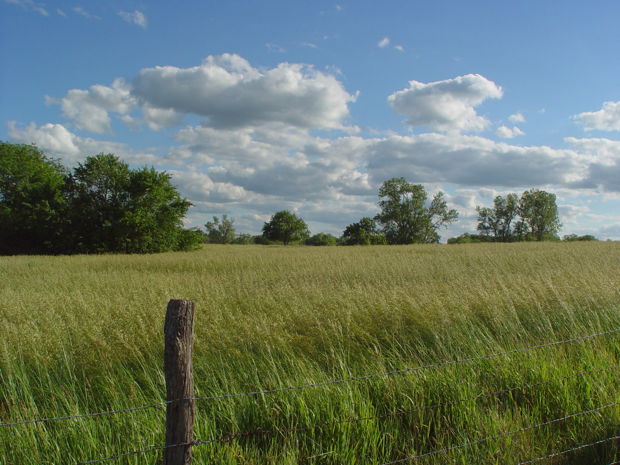A few years ago during Lent, I started picking up the books I loved as a child for another reading. Maybe I did so because I had given up television and movies, but still found myself longing for stories. Or maybe my familiar old friends provided the restful companionship I was craving during the height of a full and tiring spring semester. Whatever the reason, I am keeping this unlikely Lenten practice again. This winter, I have been trekking across the great American prairies, traveling with the Ingalls family from the big woods of Wisconsin, to Indian Territory, back to Minnesota, and finally to South Dakota.

I have been startled to find that the Little House on the Prairie series both is and is not as I remember it. The familial love, the joy and faithfulness in good times and hardship, the self-sacrifice and simplicity of pioneer life — all these awaken my memories and imaginings of being drawn into the warm circle around the stove as Pa plays his fiddle and voices rise in song. What I did not catch at age 8 or 9, and what grieves me now, is the not-so-subtle racism that despises those Native Americans whose land they claimed, most strongly on the part of gentle, kind-hearted Ma. I read the titular volume of the series and wonder how to help my little niece who has been reading the first one, Little House in the Big Woods, engage with the second. What help does she need to pull apart the good from the ugly in the story? Or should I trust that somehow, as it has for me, the ugly will fade while the good remains?
And in those questions, suddenly my Lenten readings seem less like an odd or even frivolous choice. For they draw me to ask: What help do I need to pull apart the good from the ugly in my story? What do I need to see it with fresh eyes, to notice the ugly bits that I glossed over earlier or perhaps wasn’t yet equipped and able to see?
I need the change of perspective and intention that Lent brings. Even something as simple as the re-ordering of the worship service at my church and moving the confession to the beginning reminds me to allow the Spirit to gently examine my heart so that I can hear in new ways the call to surrender myself more fully to God. Fasting reveals even more, showing me attachments I hadn’t even realized I had and inviting me to let them go so that I might be more completely filled by God.
I also need to remember that I am dust and to dust I shall return. I am blessedly finite and will one day fade back to dust. I seek to live faithfully and in a way that delights God, but undoubtedly if someone could read my story in a hundred years, there would be much to find fault with, both things done and left undone. I am as flawed as Ma Ingalls. Lent shows me some of those things, but how much more will death and the passage of time reveal my failings and frailties. Being mindful now of my mortality grants me the humility to allow God to sort the good from the ugly, for God sees best from the perspective of eternity what will remain.
Ultimately, this is what I need to know, in the core of my being: the good remains. When the good and the ugly are finally and fully pulled apart, I will be who I was always meant to be. Little by little, that happens in Lent and all of life as God re-makes me. And, at last, when I am re-made from the dust of death into a new creation, when I stand before Jesus, I shall be like him. The good shall remain.